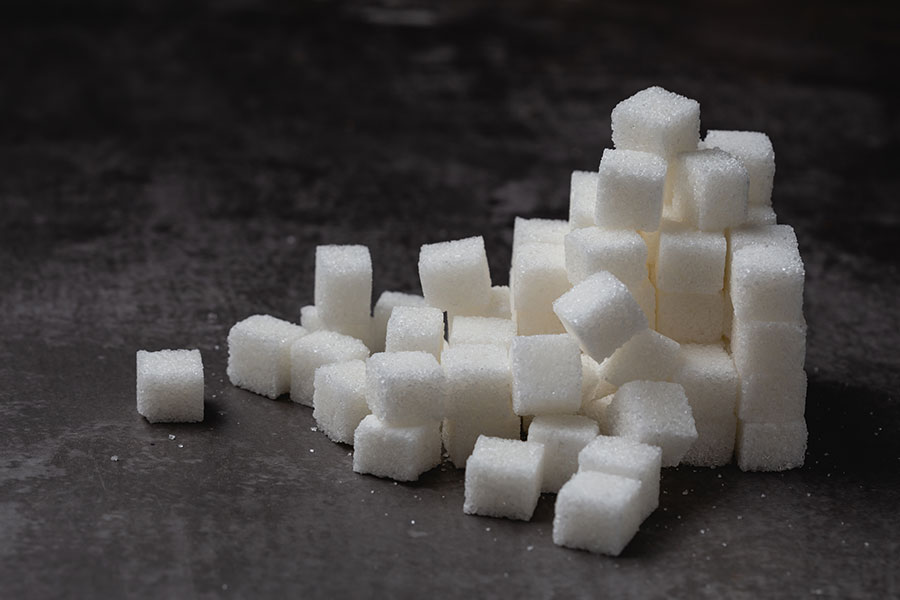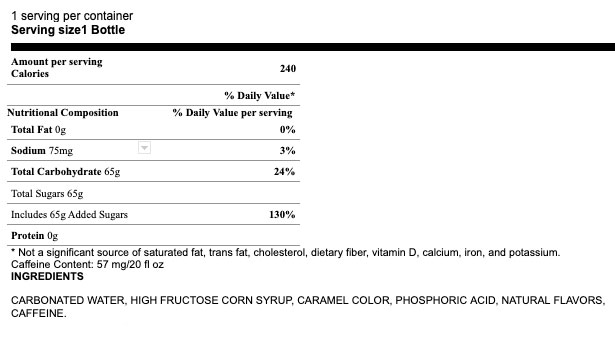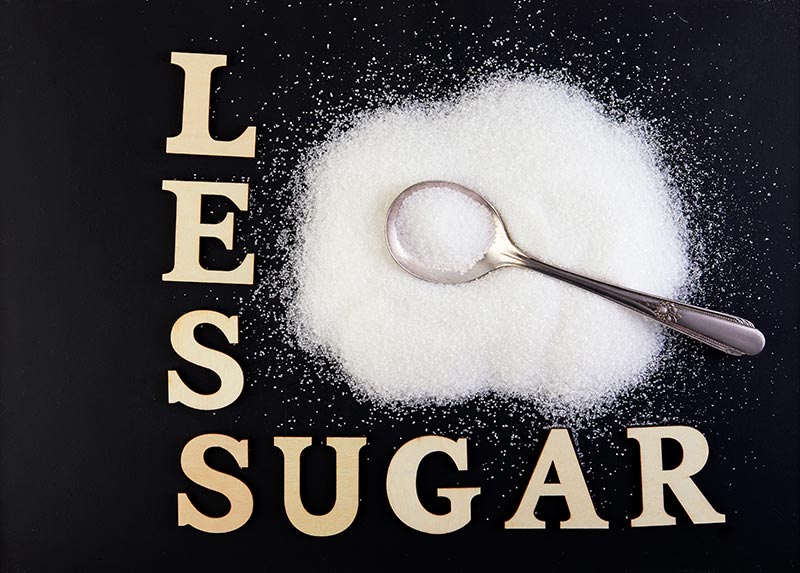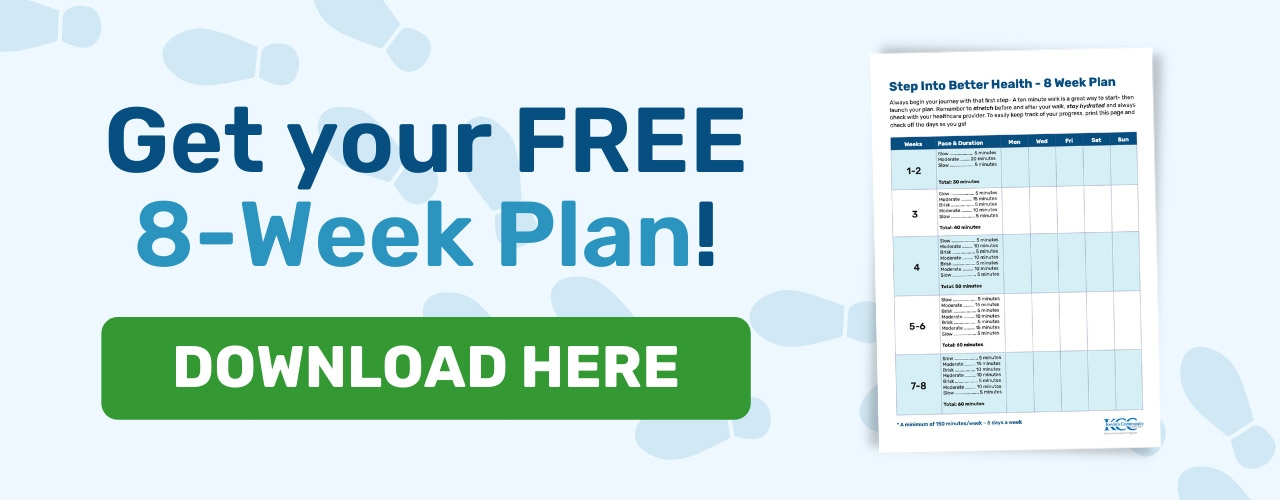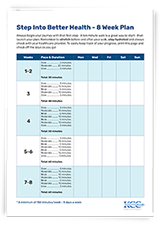Cutting Out Excess Sugar
How to Reduce Sugar
Let’s be honest, 5 pounds quickly turns to 20, and what follows is more than just tight jeans. The unfortunate news is that eating processed sugar is bad for our health. There is no good recipe for moderation. Sugar is added to everything, and it takes a real effort to remove it from your diet. Consuming excessive amounts of processed sugar is associated with many negative health effects – Obesity, Type II Diabetes, and Cardiac disease.
What is an excessive amount of sugar and what is processed sugar?
According to the American Heart Association (AHA), the maximum amount of added sugars you should eat in a day: (Johnson, 2009).
Men: 150 calories per day (37.5 grams or 9 teaspoons)
Women: 100 calories per day (25 grams or 6 teaspoons)
To put it in perspective, here is a label from a well-known regular 16 oz. (473-ml) soda showing 65 grams of sugar among the nutritional composition.
(Coca Cola, 2021)
The can of regular soda has 65 grams of sugar- nearly 3 times the total recommended amount/day for women! Nothing left for the rest of the day (Wang, Fang & Yu, 2015). Studies have shown that people who drink sugar-sweetened beverages, including fruit juice, are more likely to develop diabetes (Xi et al., 2014). A study in over 30,000 people found that those who consumed 17–21% of calories from added sugar had a 38% greater risk of dying from heart disease, compared to those consuming only 8% of calories from added sugar. The US dietary guidelines advise people to limit their sugar intake to less than 10% of their daily calorie intake (Yang, 2014).
It’s important to make the distinction between added sugars and sugars that occur naturally in foods like fruits and vegetables. The most common added sugars are regular table sugar (sucrose) and high fructose corn syrup (HFCS), which is a sugar-based sweetener used in most soft drinks and processed foods in the U.S. It was assumed that HFCS was the culprit for America’s widening girth, but many studies have concluded that both added processed sugar and HFCS are equally bad for us. The most common form of high-fructose corn syrup, HFCS 55, is virtually identical to regular table sugar. Many studies show that sugar and HFCS are equally harmful and equally bad when consumed in excess (Leech, J. 2020, August).
“Nutritionally, people don’t need any sugar in their diet. WHO recommends that if people do consume free (added) sugars, they keep their intake below 10% of their total energy needs and reduce it to less than 5% for additional health benefits. This is equivalent to less than a single serving (at least 250 ml) of commonly consumed sugary drinks per day,” says Dr. Francesco Branca, Director of WHO’s Department of Nutrition for Health and Development (WHO, 2018).
As you readjust your meals toward healthier choices there are many foods to choose from and still avoid added sugar, such as fruits and berries which are among the world’s most popular health foods. Include eggs in your diet. Not long ago, they were considered high in cholesterol and unhealthy but now they are considered safe, healthy, and nutritious (Fernandez, 2006). Lean beef, chicken, and lamb are all great sources of protein, low in fat, and lamb is an excellent source of omega-3 fatty acids. Vegetables and fruits have several properties that make them effective for weight loss. They contain water, fiber, and various micronutrients and have a low-calorie content (Ledoux, Hingle, Baranowski, 2011). Adding foods that contain fiber is often recommended for weight loss. Although the evidence is mixed, some studies show that fiber can increase satiety and help you control your weight over the long term (Clark & Slavin,2013). Studies show that people who eat vegetables and fruits tend to weigh less (Gunnars,2021). Eating a diet made up of fresh, unprocessed ingredients and preparing meals yourself will help reduce added sugar from your diet.
Removing sugar-sweetened drinks from your diet will be a big step in changing your overall sugar intake. It is not easy to break a habit, and sugar is more than a habit. Keeping track of everything that you eat and drink each day is an excellent way of becoming more aware of the sources of sugar in your diet.
Here are some tips to help shake the sugar habit:
- Read the labels! Sugar is added in some form in all processed food, just because it says “ healthy” doesn’t mean it contains no added sugar.
- Shop the perimeter of the grocery store! focusing on fresh and whole ingredients.
- Swap sodas, energy drinks, juices, and sweetened teas for water or unsweetened seltzer.
- Drink your coffee black or use Stevia for a zero-calorie, natural sweetener.
- Sweeten plain yogurt with fresh or frozen berries versus flavored yogurt.
- Order a smoothy and insist on NO Turbinado Sugar! It’s delicious without it.
- Eat fruits instead of sugar-sweetened fruit smoothies.
- Replace candy with a homemade trail mix of fruit, nuts, and a few dark chocolate chips.
- Use olive oil and vinegar in place of sweet salad dressings like honey mustard.
- Choose marinades, nut butter, ketchup, and marinara sauce with zero added sugars.
- Look for cereals, granolas, and granola bars with under 4 grams of sugar per serving.
- Swap your morning cereal for a bowl of rolled oats topped with nut butter and fresh berries, or an omelet made with fresh greens.
- Add sliced fresh bananas to your peanut butter sandwich instead of jelly.
- Use natural nut butter in place of sweet spreads like Nutella.
- Limit alcoholic beverages that are mixed with sweetened soda, juice, honey, sugar.
Here’s the Bottom Line
Consuming added sugar has detrimental health effects. Some of these are weight gain, blood sugar problems, and an increased risk of heart disease, among other dangerous conditions. To avoid or reduce your risk of chronic health issues from the sugar in your diet, you should remove it. By following a meal plan based on a high intake of vegetables, fruit, legumes, extra virgin olive oil, nuts, fish, whole grains, and red wine, sugars, such as the ideas found on the Mediterranean Diet 101 site will give you the tools to take charge of your health and your manage your weight.
References
Amato MC, Guarnotta V, Giordano C. Body composition assessment for the definition of cardiometabolic risk. J Endocrinol Invest. 2013 Jul-Aug;36(7):537-43. doi: 10.3275/8943. Epub 2013 Apr 23. PMID: 23612318
Basu, S., Yoffe, P., Hills, N., & Lustig, R. H. (2013). The relationship of sugar to population-level diabetes prevalence: an econometric analysis of repeated cross-sectional data.
PloS one, 8(2), e57873. https://doi.org/10.1371/journal.pone.0057873
Bassuk SS, Manson JE. Epidemiological evidence for the role of physical activity in reducing risk of type 2 diabetes and cardiovascular disease. J Appl Physiol (1985) 2005;99(3):1193–1204
Blair SN. Physical inactivity: the biggest public health problem of the 21st century. Br J Sports Med. 2009;43(1):1–2
CDC.(2020,September 17).Adult BMI Calculator. Retrieved from https://www.cdc.gov/healthyweight/assessing/bmi/adult_bmi/english_bmi_calculator/bmi_calculator.html
Cecchini M, Sassi F, Lauer JA, Lee YY, Guajardo-Barron V, et al. (2010) Tackling of unhealthy diets, physical inactivity, and obesity: health effects and cost-effectiveness. Lancet 376: 1775–1784
Clark MJ, Slavin JL. The effect of fiber on satiety and food intake: a systematic review. J Am Coll Nutr. 2013;32(3):200-11. doi: 10.1080/07315724.2013.791194. PMID: 23885994
Coca Cola. (2021, June). Cola Original. Retrieved from https://us.coca-cola.com/products/coca- cola/original
Danaei G, Finucane MM, Lu Y, Singh GM, Cowan MJ, et al. (2011) National, regional, and global trends in fasting plasma glucose and diabetes prevalence since 1980: systematic analysis of health examination surveys and epidemiological studies with 370 country-years and 2·7 million participants. Lancet 378: 31–40
DiNicolantonio, J. J., Lucan, S. C., & O’Keefe, J. H. (2016). The Evidence for Saturated Fat and for Sugar Related to Coronary Heart Disease. Progress in cardiovascular diseases, 58(5), 464–472. https://doi.org/10.1016/j.pcad.2015.11.006
Fernandez ML. Dietary cholesterol provided by eggs and plasma lipoproteins in healthy populations. Curr Opin Clin Nutr Metab Care. 2006 Jan;9(1):8-12. doi: 10.1097/01.mco.0000171152.51034.bf. PMID: 16340654
Gunnars, K. ( 2021, June 10). Daily Intake of Sugar- How Much Sugar Should You Eat Per Day? Retrieved form https:// www.healthline.com/nutrition/how-much-sugar-per-day
Johnson RK, Appel LJ, Brands M, Howard BV, Lefevre M, Lustig RH, Sacks F, Steffen LM, Wylie-Rosett J; American Heart Association Nutrition Committee of the Council on Nutrition, Physical Activity, and Metabolism and the Council on Epidemiology and Prevention. Dietary sugars intake and cardiovascular health: a scientific statement from the American Heart Association. Circulation. 2009 Sep 15;120(11):1011-20. doi: 10.1161/CIRCULATIONAHA.109.192627. Epub 2009 Aug 24. PMID: 19704096
Ledoux TA, Hingle MD, Baranowski T. Relationship of fruit and vegetable intake with adiposity: a systematic review. Obes Rev. 2011 May;12(5):e143-50. doi: 10.1111/j.1467-789X.2010.00786.x. PMID: 20633234.
Leech, J. (2020, August 20). High- Fructose Corn Syrup: Just Like Sugar, or Worse? Retrieved from https://www.healthline.com/nutrition/high-fructose-corn-syrup-vs-sugar#bottom-line
Lindström J, Ilanne-Parikka P, Peltonen M. et al. Sustained reduction in the incidence of type 2 diabetes by lifestyle intervention: follow-up of the Finnish Diabetes Prevention Study. Lancet. 2006;368(9548):1673–1679
Malik VS, Pan A, Willett WC, Hu FB. Sugar-sweetened beverages and weight gain in children and adults: a systematic review and meta-analysis. Am J Clin Nutr. 2013 Oct;98(4):1084-102. doi: 10.3945/ajcn.113.058362. Epub 2013 Aug 21. PMID: 23966427; PMCID: PMC3778861
Pagidipati, N. J., & Gaziano, T. A. (2013). Estimating deaths from cardiovascular disease: a review of global methodologies of mortality measurement. Circulation, 127(6), 749–756. https://doi.org/10.1161/CIRCULATIONAHA.112.128413
Wang, M., Yu, M., Fang, L., & Hu, R. Y. (2015). Association between sugar-sweetened beverages and type 2 diabetes: A meta-analysis. Journal of diabetes investigation, 6(3), 360–366. https://doi.org/10.1111/jdi.12309
WHO. (2018, June 2). WHO urges global action to curtail consumption and health impacts of sugary drinks. Retrieved from https://www.who.int/news/item/11-10-2016-who urges-global-action-to -curtail-consumption-and-health-impacts-of -sugary-drinks
WHO. ( 2021, June 9). Obesity and overweight. Retrieved from https://www.who.int/en/news-room/fact-sheets/detail/obesity-and-overweight
Xi, B., Li, S., Liu, Z., Tian, H., Yin, X., Huai, P., Tang, W., Zhou, D., & Steffen, L. M. (2014). Intake of fruit juice and incidence of type 2 diabetes: a systematic review and meta-analysis. PloS one, 9(3), e93471. https://doi.org/10.1371/journal.pone.0093471
Yang Q, Zhang Z, Gregg EW, Flanders WD, Merritt R, Hu FB. Added sugar intake and cardiovascular diseases mortality among US adults. JAMA Intern Med. 2014 Apr;174(4):516-24. doi:10.1001/jamainternmed.2013.13563. PMID: 24493081

